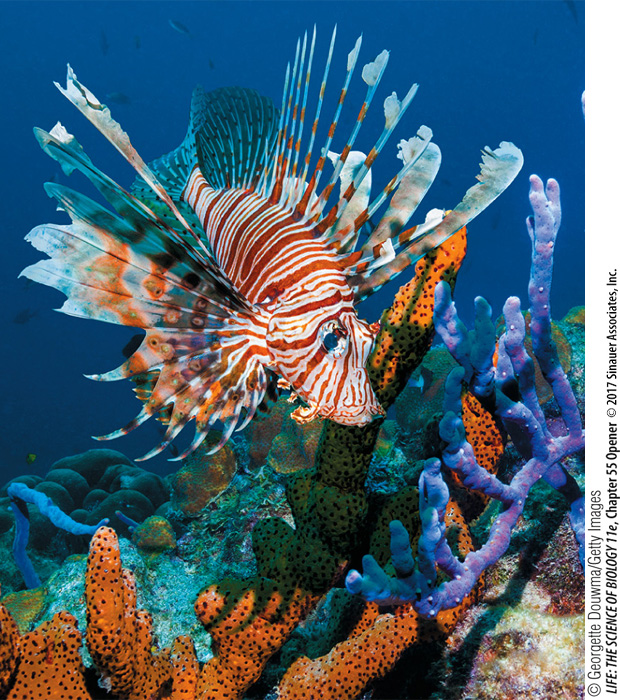investigating life
The coral reefs surrounding the Bahamas have endured the effects of human activity for centuries, but for the last two decades they have faced a threat unlike any other—the invasion of two species of beautiful but highly destructive lionfishes (Pterois volitans and P. miles). Lionfishes, first spotted off the coast of Florida in the mid-1980s, are native to the Indo-Pacific region and are popular aquarium fishes. How they came to their new habitats is uncertain, but DNA evidence suggests that they were released into the Atlantic Ocean by unsuspecting aquarium owners. Over the last two decades, lionfish populations have thrived, successfully invading the Western Atlantic, the Caribbean and Gulf of Mexico, and now as far south as Brazil. The invasion has progressed to the point that the density of lionfish in the Atlantic is greater than in their native Pacific range; in some locations, 450 lionfish per hectare (2.5 acres) have been recorded.
The invasion of marine habitats by fish predators is extremely rare. What, then, allows lionfishes to be so successful? Part of their success has to do with their ability to tolerate a variety of tropical and subtropical temperatures and salinities—from the warm waters of shallow reefs, mangroves, and sea-grass beds to the colder waters of deep reefs and offshore currents. But the real story lies in their interactions with other species—they are dominant predators and competitors in their introduced range. A survey of lionfish populations at nine sites off the coast of the Bahamas showed that their abundance increased 2.5-fold from 2008 to 2010, despite the presence of 16 species of similar native competitor fish (which declined by 44% during that period). Gut analyses of lionfish showed that they are voracious generalist predators; the increase in lionfish abundance coincided with a 65 percent decline in small-bodied coral-reef fish representing 42 different species. Other studies have shown similar results, reinforcing the notion that lionfishes may be among the most damaging marine invaders known.
Explaining the success and devastating impact of these invaders requires an understanding of the ecology and evolution of species interactions, the subject of this chapter. We will return to the example of the lionfishes’ extraordinary success in capturing their prey at the end of this chapter.
Why are small coral-reef fish species so vulnerable to lionfish predation, and what can be done about it?
